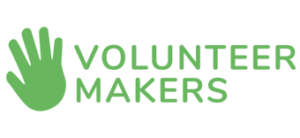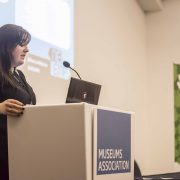Guest blog by Hannah Mather – Volunteer Makers: A Digital Revolution
My Name is Hannah Mather and I’m an emerging museum professional. I recently graduated with my MA in Museum Studies and have been working part time at Jarrow Hall as their Supervisor of Culture and Heritage. I’m also Chair of the North East Emerging Museum Professionals Group, a voluntary group which I founded back in April to encourage peer support for early career professionals like myself.
Managing volunteers can be difficult. People volunteer for different reasons, understanding what motivates your volunteer and working with them can be key to ensuring value exchange. It’s important to manage the expectations of both the organisation and the volunteer from the very start. As an early career professional, I love volunteering. I see many opportunities for self-development by working with more experienced professionals to develop and gain skills. It’s disheartening when you’re left feeling like a ‘spare part’ in a generic role.
The traditional volunteer application process is becoming outdated. It can be off putting when often we find that forms are not very accessible and do not allow people to cover a broad range of interests and skills. People are often asked to explain what they can bring to a role which is so generic that in fact, they don’t even know themselves what they are volunteering for.
It’s time to ditch our traditional approach to volunteering and embrace a model which can enable expectations to be managed affectively. We increasingly find that more people are wanting to volunteer, they just do not have as much time. This can be a deterrent, we’re unwilling to commit time when we are unsure on how much time we’re able to give.
Digital thinking is a good solution, one which embraces accessibility. In an age where most us have access to the internet museums have the potential to harness these tools and use them to outreach, inviting people to access their collections off site. Organisations like Tyne & Wear Museums, have been embracing this by thinking of ways in which they can blur the lines between community participation and volunteering. Using the Volunteer Makers digital software, they have made their collections more accessible and have been able to encourage people to share their favourite objects from the online collections database across their social media channels.
This digital platform has led to a rise in micro volunteering as people choose to partake in smaller tasks which take less time to complete but can be done much more frequently, creating the ‘long tail effect.’ Many smaller tasks have the potential to drive much larger projects through this. A great example of the micro volunteer challenge is “Take a photo of something you’ve enjoyed on your visit, then share it on social media.” It’s something which a lot of people already like to do, myself included. By sharing a photograph on social media, you’re sharing it with your friends and followers who can, in turn share the post with their friends and followers. The outreach on this can be huge and great for marketing.
There is also the potential, with this digital model to open a wider variation of volunteer opportunities. The tech can help to make these opportunities much more targeted, deciding what opportunities the person would be a good fit for based on the data they input when signing up, data which can be changed at any point. I first came across the model when volunteering for Tyne & Wear Museums. I had previously applied for several volunteering opportunities, and handed in countless forms, each as long and tedious as the other so when TWAM adopted the volunteer makers model it was a relief to know how straight forward the application was and I enjoyed the gamification of the site which allowed me to get started straight away and choose what appealed to me. It was a fun and creative way to volunteer. It wasn’t until sometime after this that I realised that this wasn’t just something TWAM were doing and that in fact there was a platform behind this was something which museums across the country were starting to see the benefit of.
My recent involvement with Volunteer Makers has been a very positive experience, I was invited to be part of the advisory board and my EMP group now have our very own platform which we hope to use to grow and manage our network by sharing opportunities and developing relationships with our regional museums. The Volunteer Makers platform I hope will allow NEEMPG to do what it has already aimed to do in a much more accessible way. Being involved in this project has also given me incredible opportunities, including being able to talk at the Museums Association Conference, giving the volunteer’s perspective on Volunteer Makers.




Leave a Reply
Want to join the discussion?Feel free to contribute!